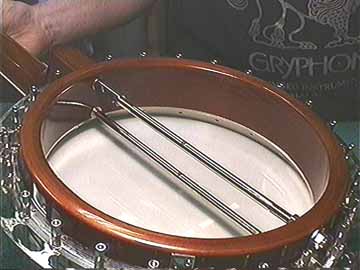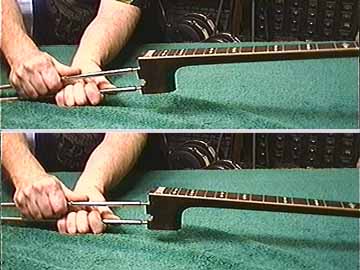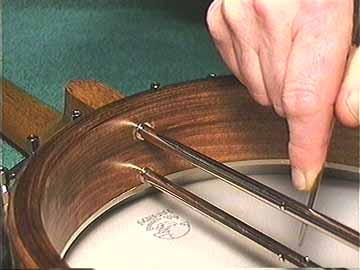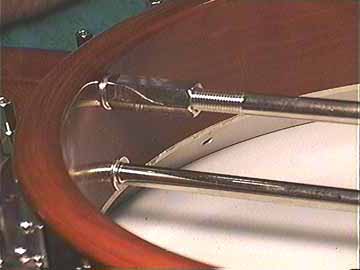Page 2 of 4
Most high quality modern banjos have two coordinating rods to adjust the neck angle
(and as a result, the action.)

They work in a simple push-pull arrangement:

If I push on the upper rod and pull on the lower rod, the neck tilts downward, and
the action will become lower.
By the way, we always describe rod closest to the head as the upper rod, even
if the banjo is upside down.
When the banjo is fully assembled, the rods work in exactly this
same way, actually deforming the shell to tilt the neck.
Before adjusting the neck angle, it's important to make sure the neck is tightly
mounted to the shell. Here I'm tightening the lower rod to draw the heel of the
neck tight against the shell:

I just stick a 1/8" Phillips screwdriver through the hole in the rod, and tighten
the neck securely. I always check both rods and tighten if necessary.
Some banjos have a long nut on the lower rod to tighten the neck to the shell.

Wow, here we are at the end of page two, and still no rod adjustment. All this preliminary
stuff is important, so I wanted to cover it as well as I could.
Another caution: Please don't use pliers on any part of a banjo. It really messes
up the nice plated nuts, and makes it look like you don't care about your banjo.
An adjustable wrench is fine for most coordinating rod adjustments.
More
1
2
3
4
Back to Index Page